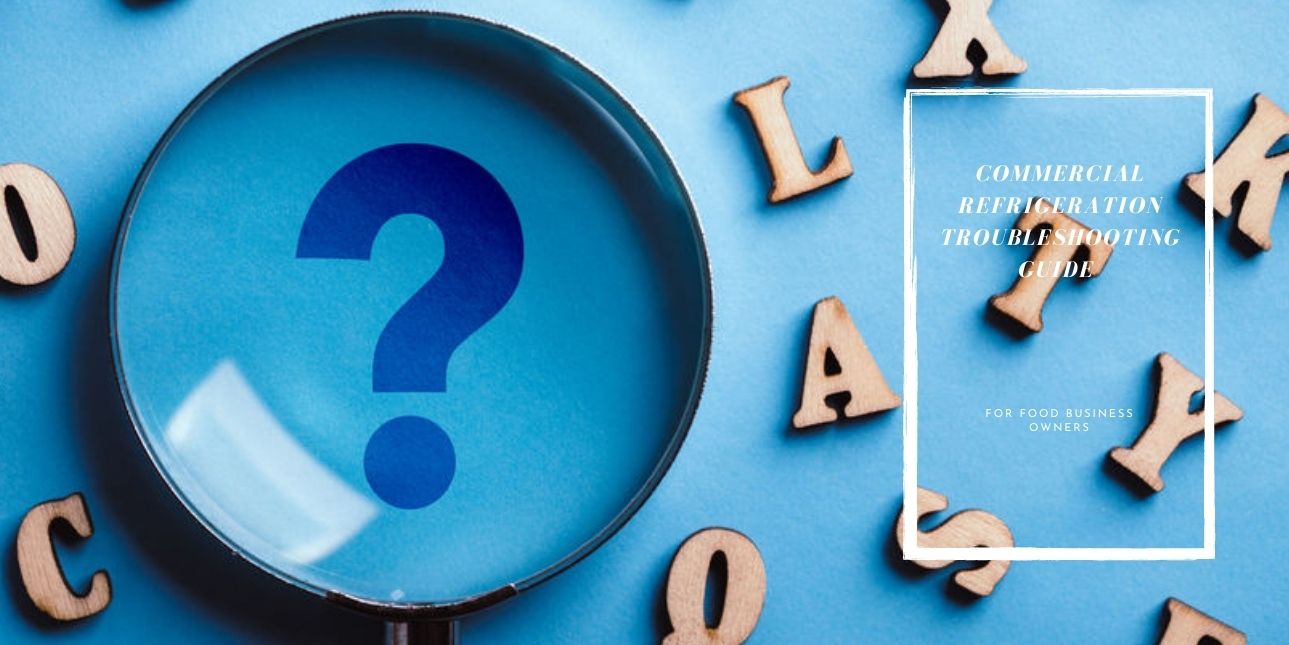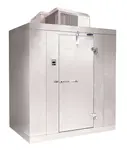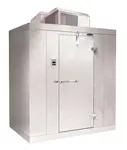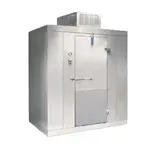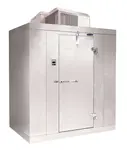For food business owners, a commercial refrigerator isn’t just another kitchen appliance—it’s the lifeline of their business. It keeps food products and supplies cool, fresh, and easily accessible. But, as with any other appliances, commercial refrigerators can—and do—malfunction. When they do, it pays to know how to troubleshoot it so you can get it up and running again before your perishables go bad.
Common Commercial Refrigeration Problems and How to Solve them
Being aware of and knowing how to solve commercial refrigeration issues not only prevents downtime but also saves you the money and hassle of calling in an HVAC technician for every minor issue. That said, here’s a detailed commercial refrigeration troubleshooting guide to help identify these malfunctions:
Commercial Refrigerator Not Powering Up
Power issues are pretty common when it comes to commercial refrigeration. Here are a few reasons why a refrigerator may fail to power up, and what you should do:
- Power switch is off: Sometimes, the solution to a refrigerator problem is as simple as flipping the power switch on. Check to see if the power switch is actually on. If it’s on, check to see if the power cord is unplugged.
- Damaged power cord or extension: If the power switch is on, and the cables are plugged in correctly, check for damaged power cords. Check for splits, frays, or any visible damage, and if you notice any, replace the cord immediately. Check the extension cord as well. Note that it’s advisable to steer clear from extension cords; a majority of them aren’t designed to power commercial refrigerators, and they may put you at risk of voiding your warranty.
- Blown fuse: Sometimes a commercial refrigerator fails to power up because there’s a tripped circuit or blown fuse box. Check your restaurant’s fuse box to see if it’s functioning as it should.
- Wiring problems: If neither of the above are the reasons why your refrigerator isn’t running, then there might be an issue with your wiring. You might need to check to see if it’s a problem with the ground wires or wiring inside your wall outlets. An easy way to troubleshoot this is through a voltage detector.
Commercial Refrigerator is Warm
The primary function of any refrigerator is to keep things cool and fresh. So when your commercial refrigerator runs too warm, it’s normal to panic. Fortunately, you don’t have to. Here’s why your commercial refrigerator may not be cooling—and some quick fixes to sort it out:
- Excess heat or direct sunlight: If your refrigerator is placed against direct sunlight or your kitchen is too hot, you may not need any sophisticated commercial refrigeration troubleshooting at all; you might just need to change its location to a cooler place.
- Damaged gasket and hinges: Before you call in a professional technician, check to see if the refrigerator door is closing properly. A torn, ripped, or damaged refrigerator rubber gasket is sometimes the reason for your true refrigerator not cooling. The same case applies if there are any damaged door hinges. Note: sometimes the problem might be that the refrigerator door is being opened too often, causing a similar effect. Try to minimize the number of times you open it and encourage your team to do the same.
- Dirty condenser coils: Condenser coils usually cool the refrigerant, enabling your refrigerant to stay cool. Dirt, dust, grease, and other debris tend to insulate these coils, consequently hindering their performance. Check and clean your condenser coils to get your fridge up and running again.
- Faulty thermostat: A faulty thermostat means cool air won’t be produced by the com pressor as needed. To determine if you’re dealing with a faulty thermostat, use a thermometer to check the refrigerator’s internal temperature. If the reading is different from what your thermostat is showing, you’re probably dealing with a faulty thermostat and it needs replacement. Before you do this, ensure the thermostat isn’t blocked by any items that may alter temperature reading.
- Failed compressor: If your gasket and hinges are in good shape, your condenser coils are clean, the thermostat is working properly, and your refrigerator is still not cold enough, then you’re probably dealing with a failed compressor. Check to see if there’s anything blocking airflow from the compressor; if there isn’t, have a pro come in for a professional commercial freezer troubleshooting.
Commercial Refrigerator is Too Cold
Here are a few reasons why your commercial refrigerator is too cold and troubleshooting tips you can use to solve this:
- Faulty thermostat: A faulty thermostat can’t accurately gauge the refrigerator’s temperature. This can cause your unit to overcool and freeze. Have a professional check it out and replace it if necessary.
- Clogged drain line: If you notice ice in the drain pan, the drain line is probably clogged, and in turn, the water it’s supposed to drain turns into ice. Check to see if this line is clogged and have it repaired immediately. Failing to address this means the drain line will become clogged completely, causing your refrigerator to overheat and consequently cause more damage.
- Problems with the auto-defrost timer: Modern commercial refrigerators feature an auto-defrost cycle function to remove excess condensation or frost in the unit. If un adjusted properly, it can cause excess ice buildup in the unit. Check and adjust the defrost cycle function timer, and if this doesn’t work, consider calling in a pro to handle the rest of the true sandwich prep table troubleshooting process.
- A damaged evaporator fan: If your evaporator fan isn’t functioning right, then you’ll have constant ice buildups in your unit. An easy way to handle this is to temporarily shut it down, chip away the ice on the fan, and then clean it. Ensure you clean the drain lines too. If the fan is only partially frozen, you may have a pressure and sub cooling system issue. This is best handled by a seasoned HVAC technician, so have them come in and continue with the commercial refrigerator troubleshooting process.
Leaking Refrigerator
A leaking refrigerator is a huge annoyance and a disruption to your food business. On the bright side, it’s a problem you can solve with the commercial refrigeration troubleshooting guide tips below:
- Blocked defrost drain: When the defrost drain is blocked, it forces your unit to work twice as hard to get its job done. The result is condensation forms on coils, and soon after, water begins leaking. Check and unclog your defrost drain and give it a day or two to see if puddles stop forming. If the issue persists, then your defrost drain might have been blocked by small particles, such as crumbs. To get them out of the way, transfer your stock and supplies to a freezer chest and your beverages to an under counter cooler, remove the plastic cover on your drain hole, and then use a funnel to pour warm water down the drain. This will help clear the clogging debris.
- Problematic water supply line: If you’re still experiencing water puddles around your fridge, then your water supply lines might be the problem. Check the plastic hose running from the water filter to the back of the unit for visible damage and if you notice water droplets collecting along its exterior, you have a water supply line problem on your hand. In this scenario, you can either swap it yourself, or have a technician come in and handle the rest of the commercial freezer troubleshooting process.
Given its critical role in your operations, it’s normal to panic if your commercial refrigerator fails. But as shown in our commercial refrigeration troubleshooting guide, not every refrigeration problem calls for a pro. However, should the problem persist, ensure you call in a seasoned HVAC technician.

